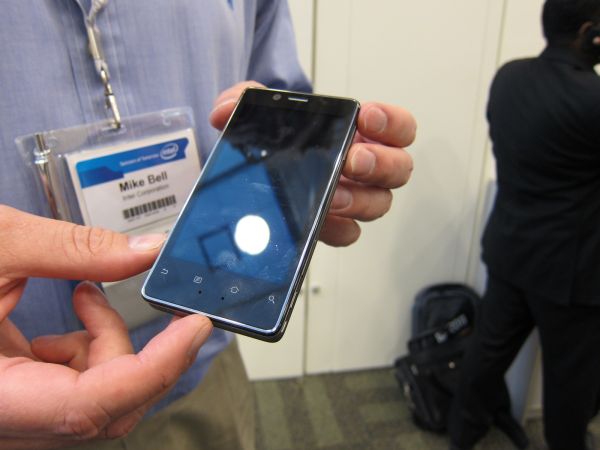
Original Link: https://www.anandtech.com/show/4829/there-will-be-two-32nm-atom-socs-in-2012-medfield-and-one-other
There Will Be Two 32nm Atom SoCs in 2012: Medfield and One Other
by Anand Lal Shimpi on September 17, 2011 12:49 AM EST

Intel did a good job of showing off what it promises to deliver with Medfield at IDF: a reasonably looking smartphone and tablet built around the platform. As a quick recap, Intel introduced Atom to the ultra mobile market with Menlow in 2008. Menlow was a three chip solution (CPU, NB, SB) built at 45nm. Moorestown came in 2010, integrating the North Bridge but still requiring a separate South Bridge. Most solutions in this space offer a single chip for the majority of the logic and interfaces. Medfield delivers exactly that. Built on Intel's 32nm process, Medfield finally integrates the CPU, North and South Bridges - putting it on par, from an integration standpoint, with offerings from TI and NVIDIA (Qualcomm still offers an integrated modem with its SoCs).
Intel has actually been relatively quiet about the specifics of a Medfield SoC. It's unclear whether there are one or two cores, with or without Hyper Threading. Even the GPU is somewhat unclear, although it's unlikely that it's something SGX 543MP2-class given Medfield's original launch target was sometime this year.
The goal of Medfield seems to have shifted to simply finding itself in a smartphone. We were supposed to see such a thing by the end of this year, but instead we've been told to expect it early in 2012. If Medfield is now aimed at simply showing up, what can Intel do to remain competitive in 2012?
Silvermont will be available in 2013, based on Intel's 22nm process. Between Medfield and it however will be another 32nm Atom design that has, until now, remained out of the public eye. We were first made aware of the design at IDF this week, however we weren't given any more details. If I had to guess, I'd say this 2nd 32nm Atom SoC would definitely be a dual-core solution (perhaps with HT enabled?) with an upgraded GPU core. Intel is playing its Atom strategy close to its chest until the first design win is announced.
The Google announcement at IDF was critical. This actually reminds me a lot of what happened to NVIDIA's Tegra 2 in 2010. Announced at CES 2010, Tegra 2 was plagued by design wins that never surfaced and work on OSes that never went anywhere. It was only after focusing exclusively on Android that NVIDIA was able to finally execute. Intel is at that stage now with Atom, now it's all up to execution and optimization.







